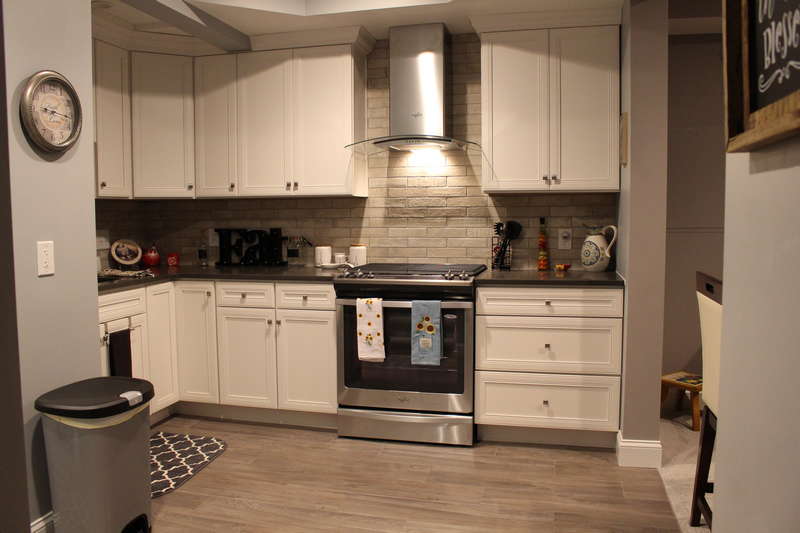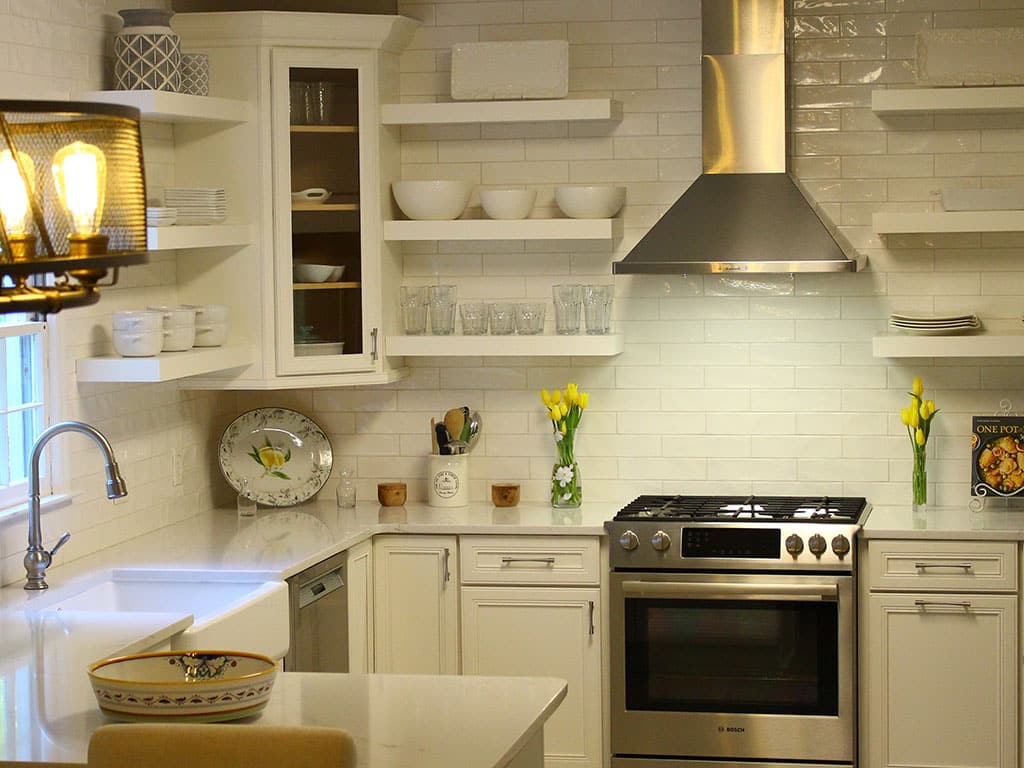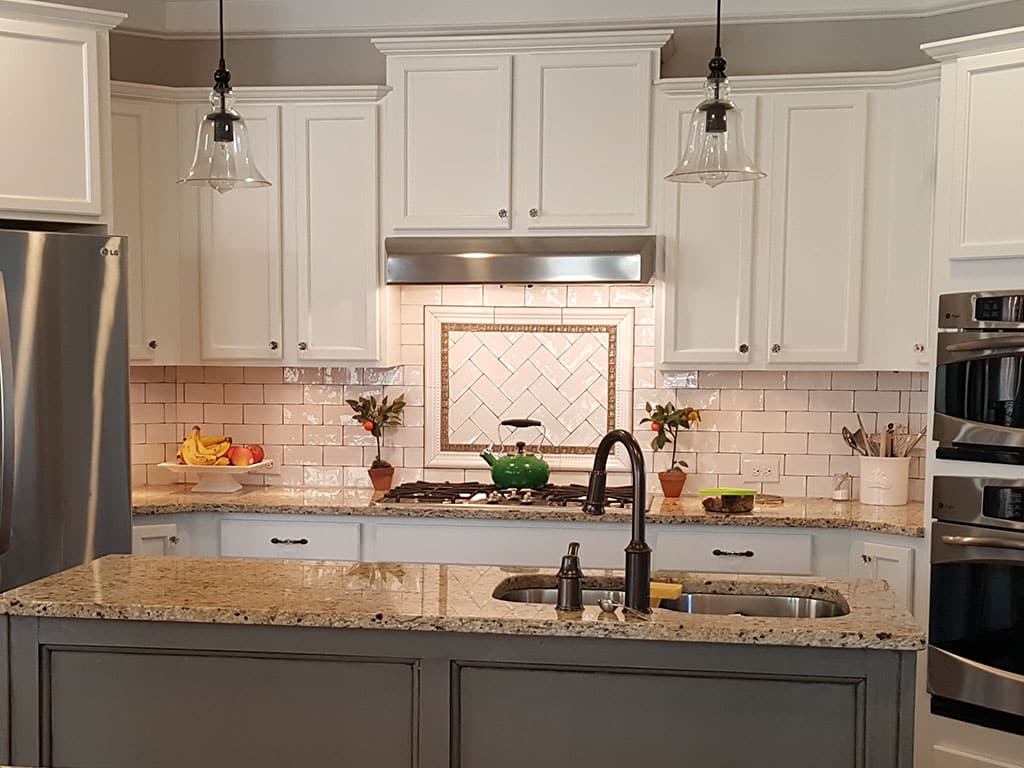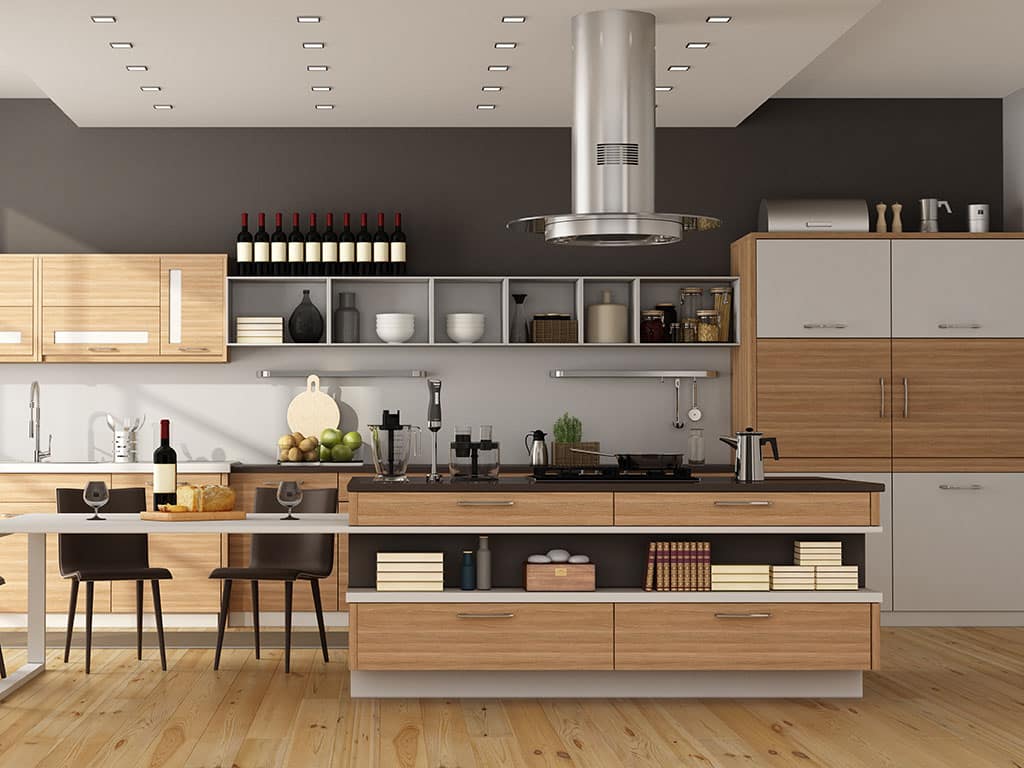While planning for our new kitchen renovation project, one of the most challenging choices is to select the new kitchen hood.
Do we want a “statement hood,” or do we want a more simple one that shows off the cabinets around?
Is it better to vent the hood outside, or is it ok to have a recirculating filter hood?
Let’s take a look at what we have to consider when choosing a new range hood.

What is the right size for a kitchen hood?
Whatever style hood you choose, the most important thing is to cover the span of the range/cooktop. The hood should ideally extend about 3″ on either side of the cooking area to maximize the exhaustion effect and vent out all the cooking vapors out of the space.
If installing an outdoor kitchen, keep in mind that the open space air will make the suction more difficult. To make your hood the most efficient, you should select a size of at least 6″ wider than the cooking area on each side.
Which is the right location for a kitchen hood?
Considering that the range hood needs to be about 28″-36″ above the cooking area, now it’s time to decide where to install it.
Depending on the cabinet space you have planned for your new design, and if you prefer to have your range or cooktop, there are several options.

Wall Mounted Kitchen Hoods
Wall mounted hoods are the most common types, used in all different design styles. We can find a wall mounted hood in either traditional kitchen design projects or contemporary kitchen design ones.
One of the most common types nowadays is the stainless steel chimney hood, which is mounted leaving a certain distance from the cabinets to the sides.
Otherwise, a more significant size metal or wooden one can also be used to create more of a statement.
Wall mounted kitchen hoods are often called “freestanding kitchen hoods,” though they are not really freestanding as they are attached to a wall.

Under Cabinet Kitchen Hoods
Under cabinet hoods are very common in smaller kitchens, where storage has the priority. They are installed under the cabinet over the range, and they may be venting outside through a duct that hides in the cupboard.

Island Kitchen Hoods
When the location of the range/cooktop is inside the island, it is necessary to use an Island Hood.
Island hoods are freestanding, as they are attached from the ceiling, and they are open from all sides.
Kitchen island hoods are generally bigger than a wall mounted hood, as they have to provide more coverage to absorb all the cooking vapors that would otherwise disperse in the ambient.

Downdraft Kitchen Hoods
Downdraft hoods are installed behind the cooktop to reverse the ventilation of the rising cooking fumes in a downward direction.
The motor is hidden in the base cabinet, and there is a metal duct that vents outside.
Downdraft hoods can only be used with a cooktop, and they are generally used when the cooking area is on the kitchen island.
